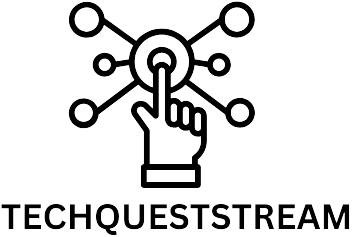In a world where your cat’s Instagram account might be safer than your bank details, confidentiality in cyber security has never been more crucial. With cyber threats lurking around every digital corner, protecting sensitive information is like guarding the last slice of pizza at a party—everyone wants it, but only a few know how to keep it safe.
Organizations are now scrambling to implement robust confidentiality measures, and rightly so. After all, no one wants their private data splashed across the internet like last week’s gossip. Understanding the importance of confidentiality isn’t just a good idea; it’s essential for maintaining trust and integrity in today’s tech-driven landscape. So, let’s dive into the nitty-gritty of keeping secrets safe in a world that loves to share.
Table of Contents
ToggleUnderstanding Confidentiality In Cyber Security
Confidentiality is a cornerstone of effective cyber security. It ensures sensitive information remains protected from unauthorized access, fostering trust and integrity within an organization.
Definition And Importance
Confidentiality refers to the practice of keeping information secret and only accessible to authorized individuals. Protecting sensitive data significantly reduces the risk of data breaches and maintains organizational reputation. Organizations that prioritize confidentiality not only comply with legal and regulatory requirements but also safeguard customer trust. In today’s technology-driven landscape, maintaining confidentiality proves crucial; incidents of data leaks can lead to severe financial and reputational damage.
Key Principles Of Confidentiality
Confidentiality hinges on several key principles. Access control restricts sensitive information to authorized users, while encryption transforms data into a code, making it unreadable to unauthorized entities. Data classification involves categorizing information based on its sensitivity, ensuring appropriate security measures are applied. Regular audits compare current practices against compliance standards, revealing potential vulnerabilities. Training employees enhances awareness about confidentiality policies, reducing the risk of accidental data exposure.
Threats To Confidentiality

Confidentiality faces numerous threats that compromise sensitive information. The following sections outline major risks.
Cyber Attacks And Breaches
Cyber attacks represent significant threats to confidentiality, with the number of data breaches escalating annually. In 2021, over 28 billion records were exposed globally, demonstrating the urgency of robust security measures. Techniques such as phishing and ransomware target vulnerabilities, aiming to access confidential information. Attackers often utilize malware to infiltrate systems, leading to unauthorized data disclosure. Failing to implement advanced security protocols allows these risks to flourish, highlighting the importance of continuous monitoring and updating defenses.
Insider Threats
Insider threats pose a unique challenge to maintaining confidentiality. Employees with access to sensitive data might unintentionally or deliberately cause data leaks. A 2022 report noted that 34% of data breaches stemmed from insider incidents, showcasing the scale of the problem. Factors such as employee dissatisfaction or lack of training can trigger negligent behaviors. Organizations must prioritize employee education and establish clear policies to mitigate these risks. By fostering a culture of security awareness, companies can significantly decrease the potential for insider-related breaches.
Strategies For Maintaining Confidentiality
Organizations must prioritize strategies to uphold confidentiality in cyber security. Effective methods enhance protection against data breaches and foster a secure information environment.
Encryption Techniques
Encryption techniques safeguard sensitive data by converting it into a code that only authorized users can access. AES (Advanced Encryption Standard) serves as a robust solution, ensuring that data remains confidential even if intercepted. TLS (Transport Layer Security) encrypts data in transit, protecting it from eavesdropping during online communication. Data at rest also benefits from encryption, using solutions like file-level encryption to secure stored information. Regularly updating encryption protocols prevents vulnerabilities and strengthens overall security.
Access Control Measures
Access control measures play a crucial role in maintaining confidentiality by limiting data access to authorized personnel only. Role-based access control (RBAC) assigns permissions according to job functions, ensuring employees access only the information necessary for their roles. Multifactor authentication (MFA) enhances security by requiring multiple forms of verification before granting access. Conducting regular access audits identifies unnecessary permissions and potential vulnerabilities, facilitating timely adjustments. These proactive measures mitigate risks associated with unauthorized access and promote a culture of confidentiality.
Legal And Regulatory Considerations
Legal frameworks significantly affect how organizations handle confidentiality in cyber security. Data protection laws set guidelines for data collection, storage, and processing while ensuring privacy.
Data Protection Laws
Numerous data protection laws govern the handling of sensitive information. The General Data Protection Regulation (GDPR) established by the European Union mandates strict consent protocols for data processing and imposes hefty fines for non-compliance. The California Consumer Privacy Act (CCPA) offers similar protections to consumers, giving them greater control over their personal information. Organizations in the healthcare sector must adhere to the Health Insurance Portability and Accountability Act (HIPAA), which safeguards patient data. Compliance with these laws is crucial for maintaining trust and preventing legal repercussions.
Compliance Requirements
Achieving compliance with data protection laws involves strict adherence to various requirements. Organizations must conduct regular risk assessments and implement security controls to protect sensitive information. Documentation of data processing activities is essential for transparency. Additionally, breach notification policies require immediate reporting of data breaches to affected individuals and authorities. Training employees on relevant regulations and best practices enhances awareness and compliance. Non-compliance can lead to significant financial penalties and reputational damage, making it critical for organizations to prioritize their compliance efforts.
Confidentiality in cyber security is non-negotiable for organizations aiming to protect sensitive data and maintain trust. As cyber threats evolve organizations must stay vigilant and proactive in their security measures. Implementing robust strategies like encryption access control and regular audits is essential for safeguarding information.
A culture of security awareness among employees further strengthens defenses against both external and internal risks. By prioritizing confidentiality organizations not only comply with legal requirements but also enhance their reputation and resilience against potential breaches. Embracing these principles ensures that sensitive information remains secure in an increasingly digital landscape.





